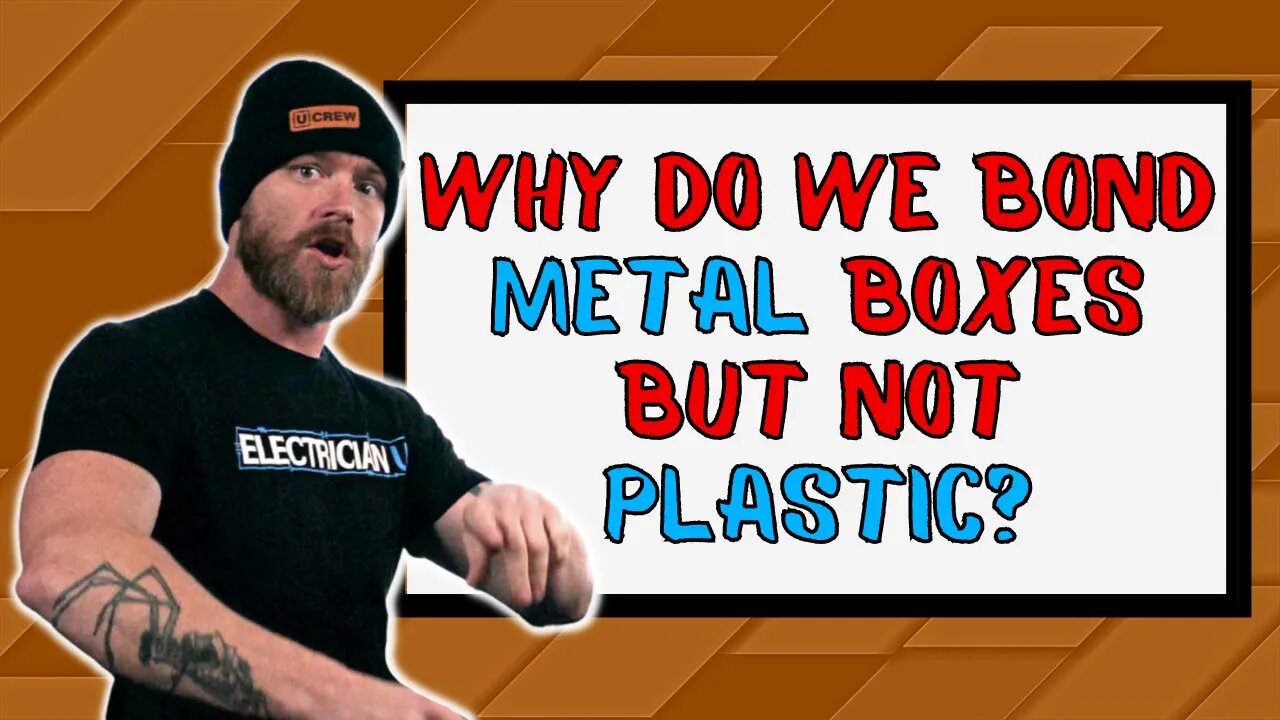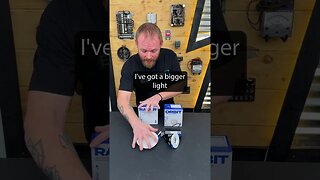Premium Only Content

Why We Bond Metal Boxes? Do Plastic Boxes Need Bonding?
As we are learning to install a quality electrical product during our apprenticeships, we are constantly reminded to bond our metallic boxes. But why do we bond metal boxes, and why DON'T we bond plastic boxes? In a never ending pursuit to answer his followers questions, Dustin once again provides a great explanation to this topic!
01:07 - CODE TIME
01:21 - Article 250 . 4a
07:45 - Why we land a ground
08:20 - Examples of a completed circuit
12:20 - Another Example
14:35 - Merch messages
🤘⚡️MEMBERSHIP⚡️🤘
JOIN ELECTRICIAN U - become a member and get:
FREE Continuing Education every year
FREE Practice Exams
FREE Monthly Video Courses
FREE Weekly Live Instructor-Led Classes
FREE Monthly Educational Newsletter
Premium Members-Only Content
Private Discord Channel
Monthly Members-Only Discord Chats
Sign up here --- https://www.electricianu.com/electrician-u-membership/
🎧🎹MUSIC AND VIDEO:🎹🎧
https://www.facebook.com/descantmv
🎬✍️ART AND ILLUSTRATION:✍️🎬
https://www.daverussoart.com
So why would we even bother to bond our metallic boxes if we aren’t required to bond our plastic boxes? To find the answer lets dig into our 2020 NEC and see what it has to say about the topic!
Article 250.4 (A)(3) Bonding of Electrical Equipment, of the 2020 NEC tells us that any normally non-current carrying (something that is normally not energized) conductive materials (metal for example) enclosing electrical conductors or equipment (conduit and boxes for example) shall be (must be) connected together (bonded) and to the electrical supply source.
What is an effective ground-fault current path you may ask? Article 100 of our 2020 NEC states that an Effective Ground-Fault Current Path is “An intentionally constructed, low-impedance electrically conductive path designed and intended to carry current under ground-fault conditions from the point of a ground fault on a wiring system to the electrical supply source and that facilitates the operation of the overcurrent protective device or ground-fault detectors”. This definition tells us that an effective ground-fault current path is a purposely constructed path that is meant to carry current under abnormal conditions (one that it isn’t normally supposed to) from the point of the fault to the source (a breaker for example) that lets the overcurrent protective device or ground fault detector to do its job (trip the breaker or blow the fuse).
So, in layman’s terms, we have to bond any metal conduit or boxes surrounding our wires together, so that in the event that something goes wrong, the offending electrical charge can be sent back to its source and allow the device protecting the installation to do its job. There could be any number of items that could cause a fault; terminations could come loose or break, things overheat, conductors burn up or go bad, or a myriad of other potential problems. Keep in mind that problems do not arise in the middle of a perfectly good installation, but rather at the termination or weak points (scuffs in the wire for example or points of corrosion).
Now that we have established that the NEC requires us to bond together our metal parts, let us dig a bit deeper still into things. Wouldn’t the ground be considered a redundant neutral? Absolutely not! The neutral is meant to have current on it returning to the source from the load allowing the circuit to create a full loop and work as it is supposed to. The ground path is an alternative path that still allows the objectionable current to return to its source under other than normal conditions. So, by bonding all of our metal parts together, it places them all on the same equal plane as a return path to the source of power giving the offending electricity a nice, easy, and quick path to return and trip the breaker or blow the fuse.
Thus far, we have established that we must bond our metallic materials together, which works fine for most of our commercial installations, but what about a residential installation or any installation where we don’t use metal (PVC for example)? Well, the code reference we gave earlier, says CONDUCTIVE MATERIALS must be bonded. So plastic (a non-conductive material) isn’t required to be bonded as it doesn’t conduct. Same rules would apply to PVC conduit.
#electrician #electrical #electricity
-
 0:50
0:50
Electrician U
11 months agoWhat Are Lumens?
12.6K4 -
 2:10:14
2:10:14
vivafrei
12 hours agoEp. 237: More Trump Cabinet Picks! MAHA or Slap in the Face? Canada on Fire! Go Woke Go Broke & MORE
154K194 -
 2:23:21
2:23:21
SOLTEKGG
2 hours ago $1.79 earned🟢 First Day on RUMBLE!
21.6K -
 LIVE
LIVE
Vigilant News Network
6 hours agoCOVID-Vaccinated Hit With Grave New Reality | Media Blackout
2,311 watching -
 1:26:31
1:26:31
Josh Pate's College Football Show
6 hours ago $1.59 earnedSEC Disaster Saturday | Major CFP Earthquake Coming | Officiating Is A Disaster | New Studio Debut
16.1K1 -
 1:43:05
1:43:05
Adam Does Movies
9 hours ago $0.29 earnedGladiator II Spoiler Conversation With Hack The Movies
19.8K -
 24:10
24:10
Bwian
9 hours agoI Don't Know What I'm Doing in Fortnite, But I Still Won...
15.6K1 -
 19:30
19:30
DeVory Darkins
11 hours ago $3.32 earnedJoe Rogan MOCKS The View as Bill Maher HUMILIATES Woke Scientist
90.4K122 -
 11:25:41
11:25:41
Scottish Viking Gaming
13 hours agoSUNDAY FUNDAY | Jump into my Sons of the Forest Game | DOO EET NOWWA!
90.2K1 -
 24:01
24:01
Winston Marshall
4 days agoThe TRUTH About The UK Farmer Protest What No One Is Talking About...
82.8K197